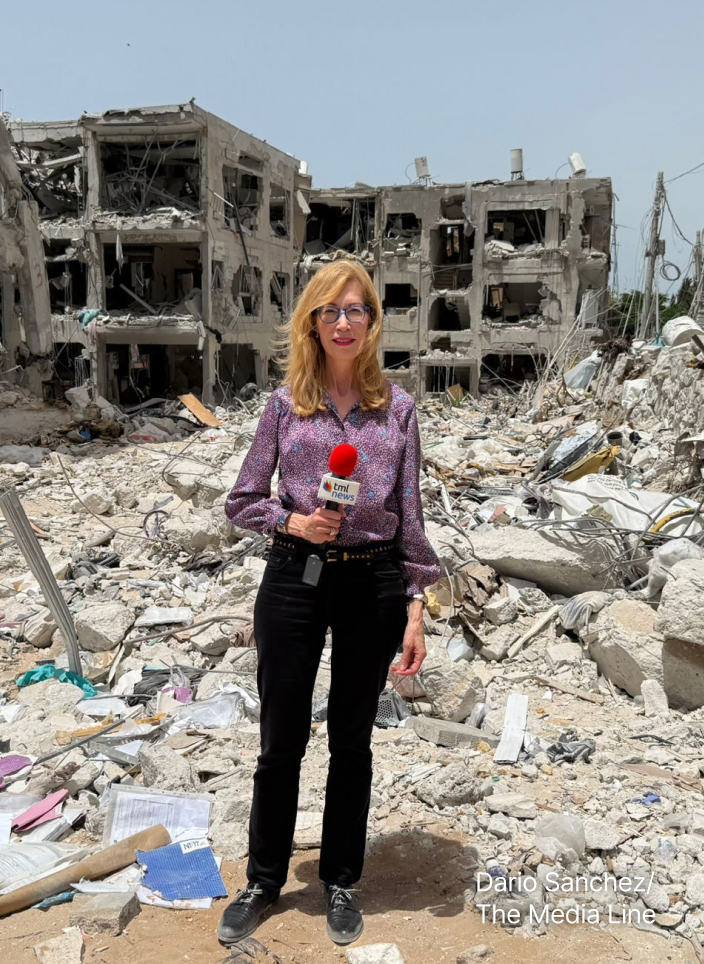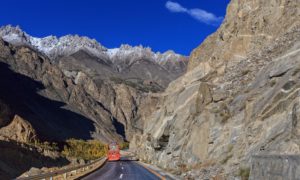Improved security control in face of terrorism allows focus on country’s stunning beauty, cultural diversity
[Islamabad] – In March 2019, Pakistan introduced an e-visa policy.
“Pakistan opening its doors to the world is the manifestation of the new confidence that the security situation has significantly changed and Pakistan is now quite secure,” Prime Minister Imran Khan said in an address at the inaugural ceremony.
After implementation of the policy, the number of tourists to Pakistan has increased significantly.
“Pakistan’s e-visa policy is open for the citizens of 175 countries,” Federal Minister Sheheryar Khan Afridi, who held the interior portfolio when the policy was introduced, and today oversees the Narcotics Ministry, told The Media Line. “Tourists seeking to obtain visas will be able to get it at their homes without visiting a Pakistani embassy or consulate.”
Afridi added that the system also facilitates a “visa on arrival” program for other nationals arriving as tourists.
“Foreign nationals of Indian origin are also allowed to avail themselves of the visa-on-arrival for religious tourism,” he noted.
“We removed cumbersome barriers of visa process so tourists across the globe can easily witness Pakistan’s stunning natural beauty,” Afridi continued. “To attract more tourists, the government also abolished the ‘No Objection Certificate,’ which had been required for foreigners to move around freely and enjoy every corner of Pakistan.”
Pakistan’s Ministry of Tourism was dissolved in 2012 after a constitutional amendment, its authority being transferred to the Pakistan Tourism Development Corporation (PTDC), whose principal objective is to develop and promote tourism in the country.
The PTDC operates several hotels and motels at unique and far-off places in northern Pakistan, as well as a few in the South. Meanwhile, scores of private hotels are available in these areas, some being rated with two stars and some with three. Five-star hotels are available in Muree, Muzzaferabad and other destinations such as Quetta, Peshawar, Lahore, Naraan, Kaghaan, Kalaam and Karachi.
“According to the available data in 2017, about 2.5 million foreigners traveled into Pakistan, while in 2018, 3.2 million foreigners traveled into Pakistan. This significant increase in foreign travelers indicates that the country’s security situation is much [more] stable and secure,” Rana Mukhtar, manager of media relations for the PTDC, told The Media Line. “Foreign tourists, particularly western people, have been on hiking, climbing and trekking expeditions in Pakistan’s Northern Areas.”
The PTDC media manager further explained that there were only three airlines operating internally, with the mostly state-owned Pakistan International Airlines (PIA), the national flag carrier, maintaining the leading share, followed by Airblue and Serene Air, which are private companies.
“The northern, hilly destinations are mainly connected via road infrastructure,” Mukhtar told The Media Line. “PTDC operates a comfortable bus service from Rawalpindi to northern areas. The majority of tourists usually travel by [individual] vehicles.”
In 2018, the British Back-Packers Society ranked Pakistan among its top 20 travel destinations.
Give the gift of hope
We practice what we preach:
accurate, fearless journalism. But we can't do it alone.
- On the ground in Gaza, Syria, Israel, Egypt, Pakistan, and more
- Our program trained more than 100 journalists
- Calling out fake news and reporting real facts
- On the ground in Gaza, Syria, Israel, Egypt, Pakistan, and more
- Our program trained more than 100 journalists
- Calling out fake news and reporting real facts
Join us.
Support The Media Line. Save democracy.


“Pakistan’s international tourism industry appears to be finally taking off, and it’s great to see,” Society co-founder Samuel Joynson told The Media Line. “Pakistan… is blessed with the world’s most dramatic mountain scenery, best-kept adventure travel, great food and extremely hospitable culture.”

Gilgit-Baltistan, Pakistan’s northernmost area, has the greatest concentration of the world’s highest peaks. (Courtesy British Backpacker Society)
Joynson said the country’s new e-visa policy and rapidly developing tourist infrastructure mean that “this adventure travel secret is finally getting out, and it is great news for both Pakistan and travelers worldwide.”
He related that while traveling in Pakistan, he experienced no security concerns whatsoever.
“In a couple of border regions, I was assigned a local police officer to take care of my security, but this is not at all unusual in developing tourism markets, and I was not concerned,” he said, adding nevertheless: “I would advise all travelers to conduct independent security research before traveling to any country and to avoid simply basing their security opinions on often sensationalist media headlines.”
The Media Line also spoke with Muhammed Arif, a former intelligence official in Pakistan and today director of a private security company.
“The current situation for tourism is comparatively better, with a visible decrease in terrorism,” he said.
Pakistani Taliban murdered 10 foreign tourists along with their Pakistani cook in the base camp of Nanga Parbat, the country’s second-highest peak, in 2013. Some areas, according to Arif, such as Waziristan, as well as Chitral, are a “little bit unsafe,” but overall, the rest of the Khyber Pakhtunkhwa province is safe.
“Due to an insurgency in some area of Baluchistan, tourists require special permission,” he added. “But the rest of the tourist destinations across the country, which include Karachi, Thatta, Mohin Jo Daro, Lahore Islamabad, Taxila, Peshawar, Gilgit, Hunza and Skardu, are all safe places.”
Joint commercial ventures are also boosting potential tourism.
On September 19, PIA and the UK-based International Hospitality Investment Group (IHIG) signed a memorandum to promote tourism in Pakistan. Through this alliance, all PIA passengers will be entitled to a complimentary stay at any of IHIG’s properties located in northern tourist destinations.
While speaking to the press after the signing ceremony, IHIG chairman Alun Richards said: “Our effort is focused on bringing the world to this beautiful country, which has the world’s tallest peaks…. God has gifted this country with nature’s best beaches, forests, mountains, and lakes, [and] with PIA, we are continuing to move rapidly in the right direction.”
On the down side, government auditors found that PIA operated as many as 46 empty flights out of Islamabad airport in 2016-17, not including 36 flights that took off empty after either delivering passengers to religious pilgrimages or heading to pick them up. This led to a loss of 184 million Pakistani rupees, or about $1.178 million.
In their report, the auditors said the “operation of flights without passengers shows a lack of proper planning and control on the part of management.” The matter was reported to the airline’s top leadership in 2018, but no action has been taken.
Speaking to The Media Line on condition of anonymity, one audit official said that “the officials involved in this negligence have strong political backgrounds. Therefore, authorities are reluctant to take any legal action against them.”
Pakistan has many historic, beautiful and even breathtaking sites, and is a land of high adventure.
‘God has gifted this country with nature’s best beaches, forests, mountains, and lakes….’ (Photos by S.M. Bukhari)




Gilgit-Baltistan, Pakistan’s northernmost area, has the greatest concentration of the world’s highest peaks, with five soaring to over 8,000 meters, including the world’s second-highest peak, K-2. The world’s most traditional polo tournament is played in the Shandur Pass, which connects Gilgit-Baltistan and Khyber Pakhtunkhwa. (It is the loftiest polo ground in the world, at 3,700 meters.)
In the Chitral district of Khyber Pakhtunkhwa, the Kelash Valley is one of Pakistan’s major tourist attractions. Kelash itself was part of the Greek civilization, and its people have their own religion and culture.
Pakistan also boasts major religious sites for Buddhists, Sikhs and Hindus, and attract a large number of visitors from around the world.
On September 27, the PTDC marked World Tourism Day. Syed Intekhab Alam, its managing director, told The Media Line that “the initiatives taken by the present government will help achieve the targets of creating more and more jobs, especially for women and youth.”